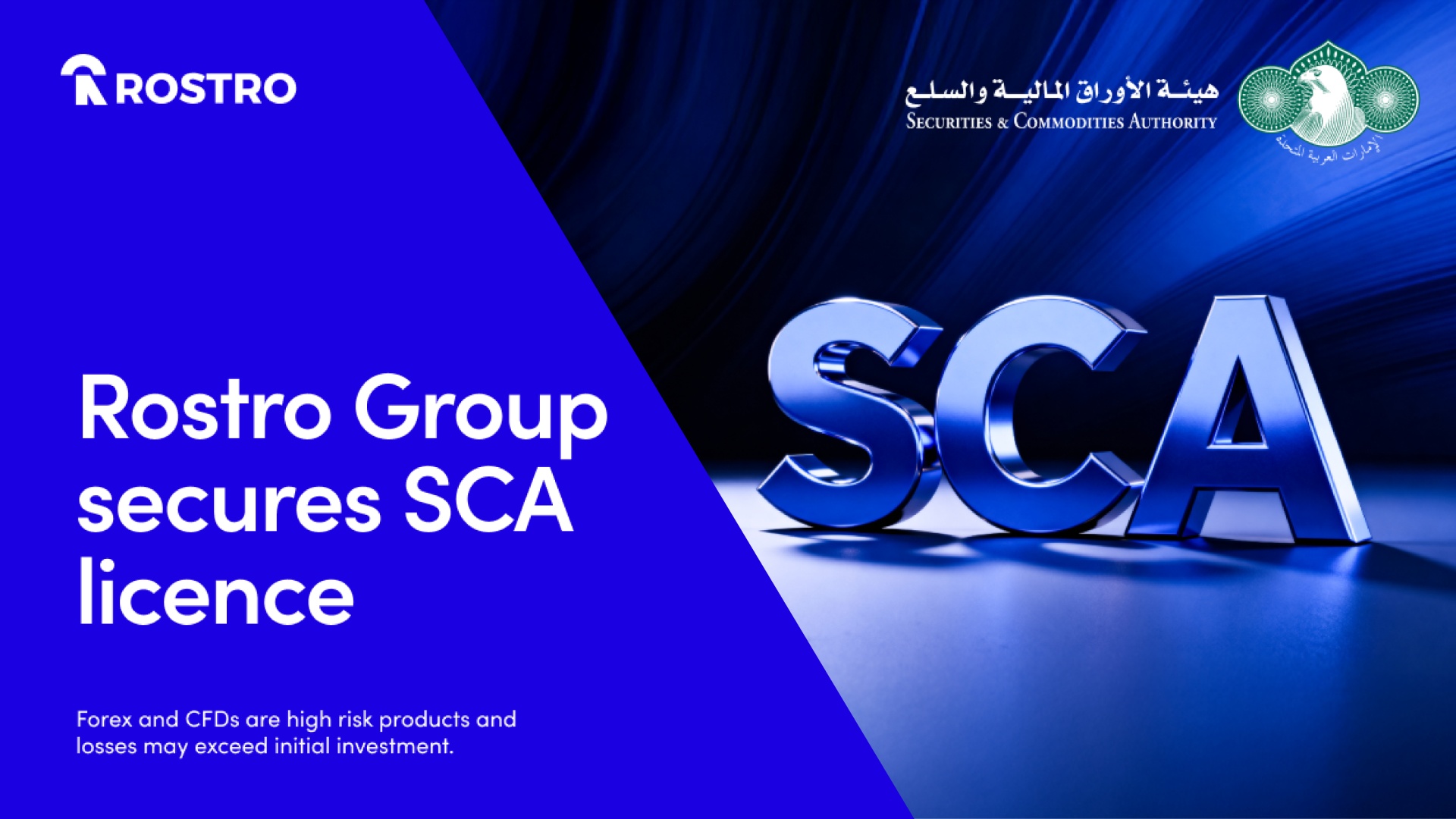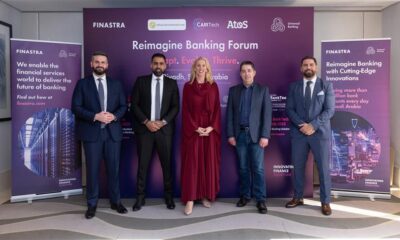Financial
Redefining Business Interruption Insurance for Bitcoin Miners

Exclusive interview with Claire Davey, Head of Product Innovation & Emerging Risk, RELM
Relm Insurance, a leading specialty insurer for emerging and innovative sectors, has announced the launch of BTC Business Interruption Insurance (BTC BI), the first-ever Bitcoin-denominated business interruption coverage tailored specifically for Bitcoin miners. Unlike traditional policies, BTC BI eliminates currency conversion risks by aligning directly with miners’ revenue streams. It uses hashprice, a real-time metric based on mining economics, to accurately calculate losses and ensure fair compensation, providing miners with coverage that truly reflects their operational realities.
How AI Can Elevate Blockchain Security to New Heights?
The key difference is that the BTC BI is entirely denominated in Bitcoin. For miners, this is a game-changer. They earn revenue in Bitcoin, so having insurance coverage in the same currency eliminates the complexities and risks associated with currency conversion. Traditional insurers typically offer policies in fiat currency, which can misalign coverage with actual losses and expose miners to exchange rate volatility.
By denominating limits, premiums, and claims in Bitcoin we’re aligning our policies directly with miners’ revenue streams. This alignment provides stability in a volatile market and ensures that, in the event of a claim, miners receive compensation that truly reflects their operational losses. It removes the uncertainty of fluctuating currency values, allowing miners to focus on what they do best — power the digital economy.
Another standout feature is how we calculate loss of revenue. We use each miner’s hashprice, a metric that measures revenue per unit of computing power. This approach means any payout is based on real-time mining economics and ensures fair and accurate compensation.
Traditional policies often rely on generalized metrics or historical financial data that don’t capture the nuances of mining operations. Mining profitability can change rapidly due to factors like network difficulty, hash rate, and Bitcoin’s market price. By tying our calculations to the hashprice, we’re directly reflecting the miner’s actual earning potential at the time of the interruption.
This tailored method acknowledges that no two mining operations are the same. Whether a miner is operating a large-scale facility with the latest ASICs or a smaller setup with different equipment, our coverage adapts to their specific situation. It provides a safety net that’s as dynamic and responsive as the industry itself.
Can you elaborate on the technical underwriting expertise that Relm brings to the Bitcoin mining sector?
Absolutely. Our underwriting team, led by experts like George Frith , is deeply embedded in the Bitcoin mining community. George and his team maintain ongoing dialogues with miners and their broking partners to truly understand the exposures and challenges they face.
Claire Davey, Head of Product Innovation and Emerging Risk, puts it best:
“We’re not just insurers sitting behind desks — we’re partners invested in our clients’ success. By engaging directly with miners, we gain insights that allow us to craft policies that genuinely meet their needs. We visit mining sites, attend industry conferences, and stay up to date with the latest technological advancements. This hands-on approach enables us to anticipate risks rather than just react to them.”
Our team’s expertise spans the technical aspects of mining hardware, software, and operations. We understand the critical importance of uptime, the impact of energy costs, and the nuances of regulatory environments across different jurisdictions. This deep knowledge allows us to assess risks with precision and offer coverage that truly reflects the realities of mining.
Moreover, our proactive engagement means we’re aware of emerging trends before they become mainstream. Whether it’s the shift towards renewable energy sources, advancements in mining equipment efficiency, or changes in network protocols, we’re positioned to adjust our offerings accordingly.
By staying at the frontier of industry developments, we ensure that our clients are not only protected against current risks but prepared for future challenges. This level of commitment and expertise is what sets us apart in the insurance sector.
What prompted Relm to develop BTC Business Interruption Insurance specifically for Bitcoin miners?
Bitcoin miners have been underserved by the traditional insurance market for too long. Many insurers lack appetite for this space due to unfamiliarity or scepticism about cryptocurrency. There’s a perception that the crypto industry is too volatile or complex, which has led to a lack of suitable insurance products for miners.
Even those willing to offer coverage often can’t denominate policies in Bitcoin, creating a disconnect with how miners operate. This mismatch can lead to complications when filing claims and can expose miners to unnecessary financial risks due to currency fluctuations.
Miners face unique challenges that traditional insurers just haven’t addressed. For one, there’s the massive energy demand. Mining operations require a lot of power, making them vulnerable to power outages and spikes in energy prices. Then there’s the equipment itself. The hardware miners use is highly specialized and prone to damage and obsolescence over time, adding a layer of risk. Finally, there’s market volatility. Bitcoin’s value regularly dips and soars, greatly impacting miners’ revenue streams and operational stability. With BTC BI, we have addressed these specific pain points, offering a solution that wholly aligns with miners’ needs.
By launching BTC BI, we’re not just providing insurance; we’re empowering miners to innovate without the burden of unmanaged risk. We believe in the future of cryptocurrency and the vital role miners play in the digital economy.
As Claire notes:
“Bitcoin miners are at the forefront of a financial revolution and they deserve an insurance solution that recognizes and supports their vital role in the digital economy. We developed BTC BI to be that solution — a policy that speaks their language and meets their specific needs.”
What kinds of clients and partnerships does Relm engage with across its specialty industries?
We specialize in supporting clients from emerging sectors with innovative business models, and Bitcoin mining is a prime example.
Our clientele includes:
● Publicly Traded Miners
Large-scale operations with significant infrastructure and investment.
● Private Miners
Independent operations that may be scaling up or focusing on niche markets.
● Off-Grid Miners
Innovative setups utilizing renewable energy sources or operating in remote locations to optimize costs and efficiency.
Each client has unique needs, and we pride ourselves on offering customized solutions that address their specific challenges. We don’t believe in a one-size-fits-all approach. Instead, we tailor our policies to fit the operational realities of each miner.
We also cultivate strategic partnerships with brokers who specialize in emerging risks. These brokers understand the nuances of the industries we serve and help us stay connected to the evolving needs of our clients. Their expertise is invaluable in crafting policies that are both comprehensive and flexible.
Additionally, we collaborate with Web3 technology firms that enhance our risk management capabilities. By integrating cutting-edge tech solutions, we’re able to improve risk assessment by using advanced analytics and blockchain data that allows us to evaluate exposures with greater accuracy. With real-time monitoring tools, we proactively identify and address potential issues before they become significant, providing a more robust layer of risk mitigation for our clients.
These collaborations allow us to offer more than just insurance, they enable us to provide a suite of services that support our clients’ operational efficiency and strategic goals. We’re helping industries grow and become stronger.
Financial
Finastra’s Saudi Arabia Reimagine Banking Forum Spotlights Innovation, Trust, and AI in a Vision 2030 Financial Landscape

Finastra, a global leader in financial services software, brought together regulators, banks, fintechs, and technology leaders at the Saudi Arabia Reimagine Banking Forum in Riyadh to examine how the Kingdom’s financial sector can accelerate innovation while protecting trust, resilience, and customer value under Vision 2030.
The forum featured perspectives from regional and global experts, including Rudy Kawmi, Vice President for Middle East, Africa and Asia Pacific, Universal Banking at Finastra, along with senior leaders such as Abdulkarim Alsowaygh, Head of Advisory Services at TechArch, and Aymen Belhedi, Digital and Technology Transformation Leader at KPMG Middle East.
As the conversation turned to how banks can turn ideas into action, Finastra shared perspectives based on its long-standing work with financial institutions in the Kingdom, where it has supported banks since the early nineties through local expertise, established relationships and ongoing investment. The company referenced the role of modern core platforms like Essence, in supporting agility, compliance and customer-centric design. Finastra Essence was also recognized as a Leader for the 2nd consecutive time in the Gartner Magic Quadrant for Retail Core Banking Systems, Europe.
Across three panel discussions – Banking Today: Delivering delight in a hyper competitive world, Banking Tomorrow: Innovation, agility and relevance, and Practical AI: Leveraging AI for profit, safely and securely – speakers shared practical strategies to balance regulatory expectations, customer needs, and technology adoption.
Key insights from the Saudi Arabia Reimagine Banking Forum include:
Innovation anchored in trust and compliance
Panelists agreed that innovation in Saudi banking must begin with trust. Cybersecurity, regulatory alignment and security maturity were described as non-negotiables, not afterthoughts. Speakers highlighted the role of the Saudi Central Bank (SAMA) in setting clear guardrails through initiatives such as API-driven banking frameworks and the Regulatory Sandbox, enabling banks and fintechs to experiment in controlled environments while protecting consumers and financial stability.
From product proliferation to precision, lifestyle-integrated banking
The discussion underlined a shift from launching more products to delivering precise, contextual experiences. Banks in Saudi Arabia are under pressure to evolve from traditional service providers into lifestyle platforms that integrate payments, credit and everyday services into the digital journeys customers already use. With the risk of banking drifting into a utility model, where providers are interchangeable, panelists called on institutions to differentiate through relevance, immediacy and purposeful design, not just scale.
Ecosystem orchestration as the new competitive edge
Speakers stressed that no institution can innovate in isolation. Banks that act as ecosystem orchestrators, curating fintech, technology and cybersecurity partners while owning the “trust layer”, are better positioned to deliver new propositions quickly. Internal teams, advisors and partners form a single value chain. The conversation moved beyond capability lists toward how those capabilities are combined, governed and brought to market at speed.
Data and AI turning trusted information into intelligence
Data was described as a critical and often underused asset. Panelists highlighted that the real opportunity lies not in collecting more data but in converting trusted data into actionable intelligence. In this context, AI and generative AI can help banks move from reactive service models to proactive, personalized engagement, provided governance keeps pace. With the right tools and controls, small teams can now deliver improvements in productivity and customer experience that previously required much larger workforces.
Practical, ethical AI with humans firmly in the loop
The AI discussion focused heavily on ethics, explainability and human oversight. Panelists warned against black-box systems in areas such as credit decisions and collections, where AI outcomes directly affect people’s lives. They emphasized the need to identify and address bias in training data and to keep humans accountable for final decisions. AI was positioned as a powerful tool to automate repetitive tasks, assist agents and accelerate analysis, while freeing people to concentrate on higher value work.
Technology is available, but adoption remains gradual
Speakers noted that while the technology to support next-generation services is already in place, adoption timelines can vary. Some innovations introduced in pilot phases have taken time to progress to full rollout, reflecting the sector’s careful approach to implementation. The discussion highlighted opportunities for continued progress in areas such as real time, transparent cross-border payments and fully digital account opening that reduces the need for in-branch processes.
Across all sessions, there was a consistent message: Saudi Arabia is setting a high bar for responsible innovation by combining a progressive regulator, a clear national agenda and banks that are re-architecting for trust, speed and inclusion. The future of banking in the Kingdom will belong to institutions that innovate boldly, design for resilience, and earn customer trust every day.
Financial
Rostro Group Enters UAE with New SCA Licence Amid the Country’s 20% Fintech Growth Surge

Rostro Group, an international diversified fintech and financial services group, has obtained a Category 5 license from the UAE Securities and Commodities Authority (SCA), marking a significant step in its long-term commitment to shape the UAE’s future financial ecosystem.
The UAE’s fintech ecosystem continues to expand at an exceptional pace, supported by progressive regulation, rising investor appetite, and strong government initiatives. Recent industry reports from bodies such as the MENA Fintech Association and Magnitt indicate that the UAE consistently attracts over 40–45% of all fintech investments in the region, reinforcing its position as the leading fintech hub in MENA.
Looking ahead, the sector in the UAE is projected to grow at a compound annual rate of more than 20% over the next five years, driven by increasing adoption of digital payments, rapid expansion in wealth-tech and digital brokerage services, and continued regulatory enhancements from bodies such as the SCA and ADGM. With this momentum, the UAE is well-positioned to remain a regional centre of innovation, capital formation, and digital financial transformation.
With UAE Securities and Commodities Authority (SCA) strengthening oversight and raising industry standards, the approval recognizes Rostro Group as a compliant and trusted participant in the country’s expanding financial landscape. It also allows the Group to operate in line with UAE’s expectations for transparency, investor protection and responsible market engagement.
Based in the UAE, the Group is led by CEO Michael Ayres, who has long-standing experience in the region’s fintech sector. Speaking about the SCA approval, Ayres highlighted that Dubai and Abu Dhabi’s rapid evolution into a future-ready financial ecosystem is unmatched.
Ayres said, “We at Rostro Group see the UAE as one of the most forward-thinking financial centres, one that will soon rival leading centres like London, Singapore or New York. Securing this licence deepens our alignment with the country’s vision to build a tech-first, institutionally robust financial ecosystem and propels our contribution to its next phase of growth.”
Rostro Group’s multi-brand structure is built to serve diverse categories of investors through a unified global ecosystem. Its Scope Prime division supports institutional clients with industry leading trading infrastructure, while Scope Markets offers individuals streamlined access to global trading and investing opportunities.
In recent years, the product offering of Rostro Group has been widened to include access to over 60 regional CFD equities, as well as the development of proprietary CFD indices to mirror the performance of the Dubai and Abu Dhabi stock markets.
Local banking relationships have already been established. In addition, Rostro’s Scope Prime division is now ready to provide multi-asset prime brokerage services to financial institutions across the GCC, whilst the retail client-facing Scope Markets division has the ability to offer account types denominated in multiple currencies including AED and USD.
Financial
AI gives Gulf banks the edge in managing liquidity with confidence

Integrated platforms and data-driven agility will allow IFIs to meet rising expectations and shape global standards
By Matthew Nassau, Business Architect, Treasury & Capital Markets at Finastra
Markets move in cycles. Each generation experiences most of the things that previous generations have endured (bull or bear markets, natural disasters, geopolitics, …) punctuated by turning points from which the future takes a distinct path (powered flight, the transistor, The Beatles, …). These highlights are often recognized early on as important in their day and seem to appear ‘overnight’, and yet have taken years of development and formation to appear in our consciousness, while the lasting extent of their transformative power is not fully appreciated.
Generative AI (GenAI) fits the model described above, poised as it is to revolutionize treasury and capital markets by markedly altering decision-making processes for market professionals. From conversational finance to predictive analytics, AI is evolving from a mere assistant to becoming a crucial decision-making tool. In Gulf Cooperation Council (GCC) countries, GenAI could add between USD 21 billion and 35 billion each year, on top of roughly USD 150 billion that existing AI technologies are expected to contribute. That represents about 1.7 to 2.8% of the region’s current non-oil GDP.
To deliver on this potential, it is essential that financial institutions have access to high-quality data, upon which GenAI can infer connections, deliver insights and enable actions.
Data has never looked so good
Data has long been treated as one of the most important assets in financial services. Vendors have built major businesses supplying real-time market feeds, and institutions invest heavily to safeguard customer information in every form. The value is clear. What is changing is how much more that value can grow as GenAI gains access to richer and more precise datasets. Large language models can spot relationships and trends that were previously buried, turning raw information into forecasts, alerts and actions that support commercial and risk decisions.
Unlocking that potential requires broader access to the information that treasury teams already rely on. Data lakes and warehouses form part of the picture, but they rarely capture everything. Treasury management systems are a prime example. Their reporting evolves constantly and plays a central role in liquidity decisions, yet much of it remains confined within the system. By making these reporting histories available to GenAI, banks can reveal patterns over time, flag emerging opportunities or risks and prompt timely intervention.
Timing is everything
To show how quickly things have shifted, consider a discussion I had with a major European bank a few years ago. The team was exploring how to treat treasury and capital markets data as a strategic asset without forcing everything into one central system. Their vision was a unified data layer where information could stay within existing applications yet still be accessed, combined and analyzed by staff using low code tools. The goal was to shift toward more data-driven decision making across the business and to uncover new sources of commercial value.
The concept was sound, but the technology required to deliver it at scale was simply too expensive and complex at the time. The bank had to narrow its ambitions and proceed with smaller, tactical initiatives. Artificial intelligence was not even part of the conversation. It felt experimental and far removed from daily operations.
Looking back, the idea wasn’t premature in strategy, only in timing. GenAI now makes this kind of agile, distributed data insight far more realistic.
‘Go big or go home’ – not any more
Expectations have moved on as technology has matured and become easier to access. The old way of classifying data projects as either short-term tactical fixes or long-term strategic overhauls no longer applies. GenAI changes the conversation. It shifts focus from where data lives to how much value it can generate. Deploying AI in specific functions like operations, the front office or reconciliation isn’t a stopgap. It’s a practical way to unlock intelligence quickly.
What will determine success is an institution’s ability to surface a wide range of data, ensure its accuracy and let AI learn from it. This doesn’t require a massive transformation program from day one. Starting with focused use cases can improve efficiency, reduce manual work and reveal valuable insights straight away. As more processes become AI-enabled, those individual wins begin to connect, creating a stronger and more intelligent foundation across the entire organization.
Outcomes lead to incomes
When a technology is still emerging, no one can predict with certainty how far its influence will reach. The best indicators often come from those willing to adopt early and test ideas in the real world. Many concepts compete for relevance, and only a few will ultimately reshape how people work.
The organizations that benefit most are the ones comfortable experimenting, moving quickly and learning as they go. GenAI encourages exactly that mindset. It allows teams to explore and refine new approaches by tapping into the data they already hold. The results show up in lower costs, stronger client value and healthier margins.
This shift is not about replacing existing business models but enhancing them. Each step forward can deliver outsized returns for firms confident enough to start now.
-

 Tech News1 year ago
Tech News1 year agoDenodo Bolsters Executive Team by Hiring Christophe Culine as its Chief Revenue Officer
-

 VAR8 months ago
VAR8 months agoMicrosoft Launches New Surface Copilot+ PCs for Business
-

 Tech Interviews2 years ago
Tech Interviews2 years agoNavigating the Cybersecurity Landscape in Hybrid Work Environments
-

 Tech News5 months ago
Tech News5 months agoNothing Launches flagship Nothing Phone (3) and Headphone (1) in theme with the Iconic Museum of the Future in Dubai
-

 Tech News2 years ago
Tech News2 years agoBrighton College Abu Dhabi and Brighton College Al Ain Donate 954 IT Devices in Support of ‘Donate Your Own Device’ Campaign
-

 Editorial1 year ago
Editorial1 year agoCelebrating UAE National Day: A Legacy of Leadership and Technological Innovation
-

 VAR1 year ago
VAR1 year agoSamsung Galaxy Z Fold6 vs Google Pixel 9 Pro Fold: Clash Of The Folding Phenoms
-

 Cover Story9 months ago
Cover Story9 months agoUnifonic Leading the Future of AI-Driven Customer Engagement
























